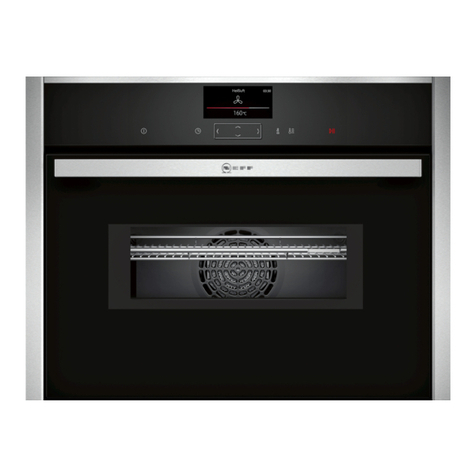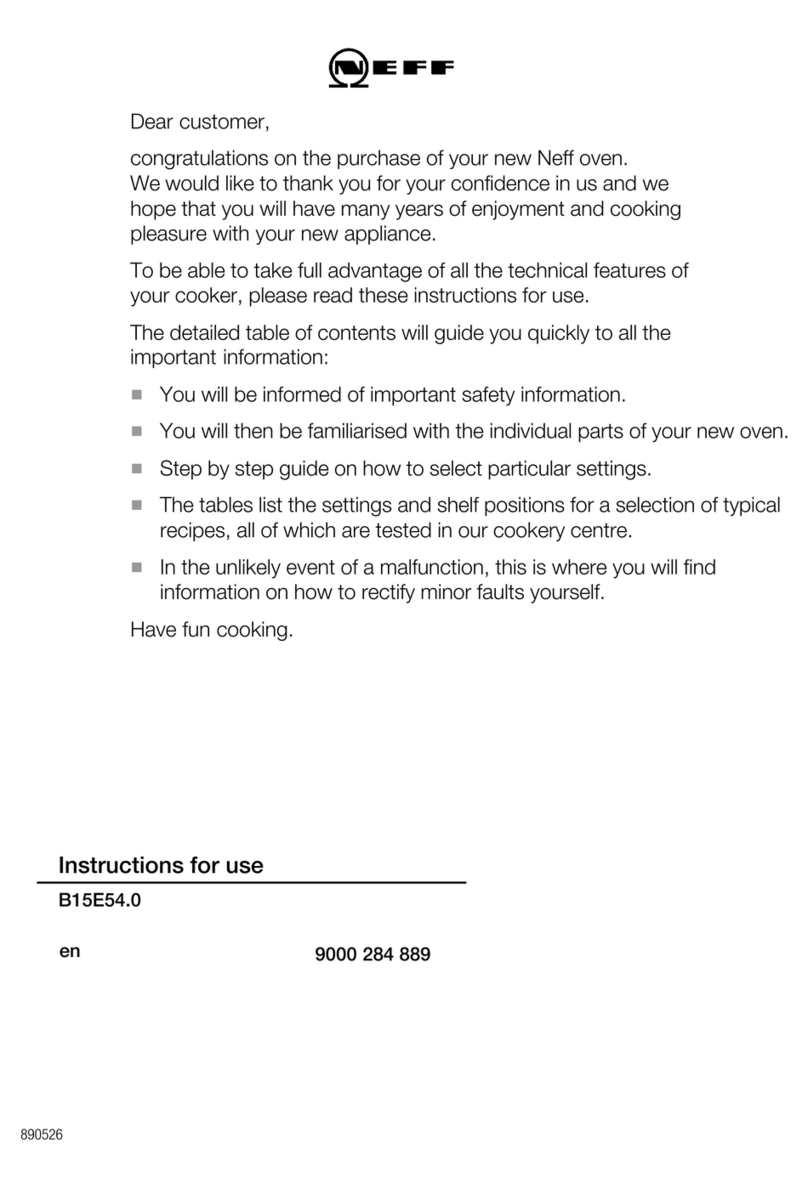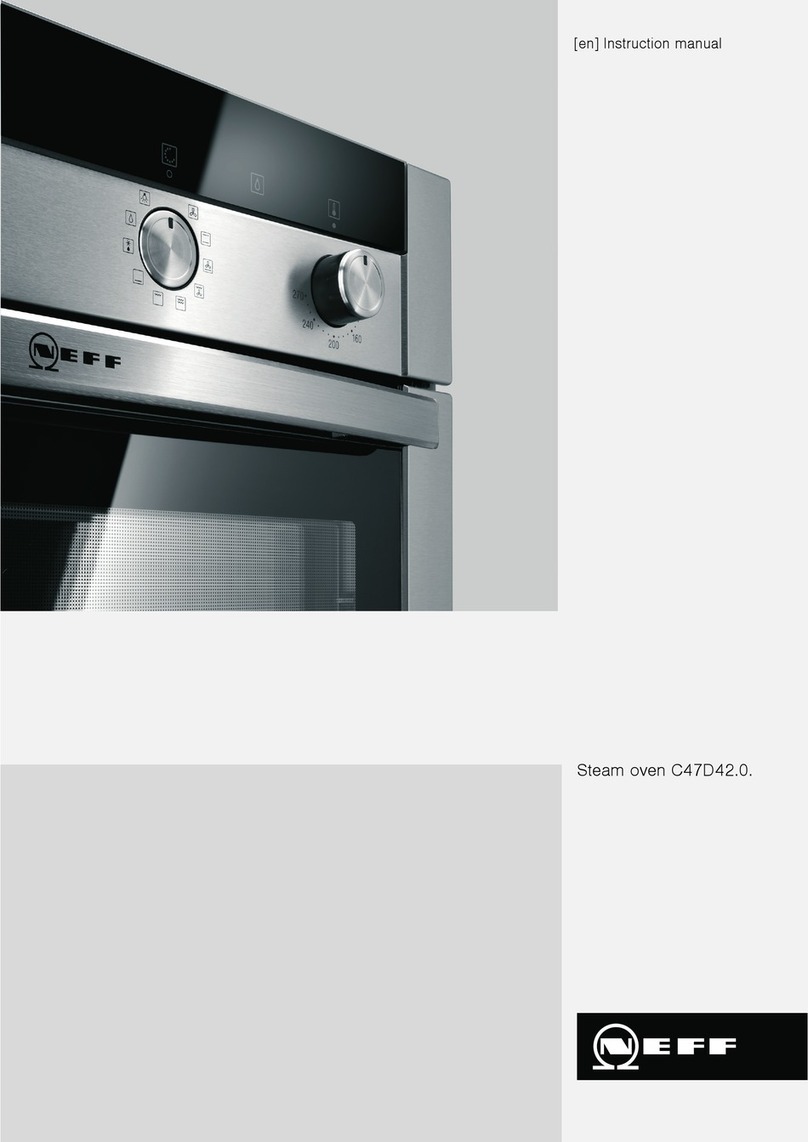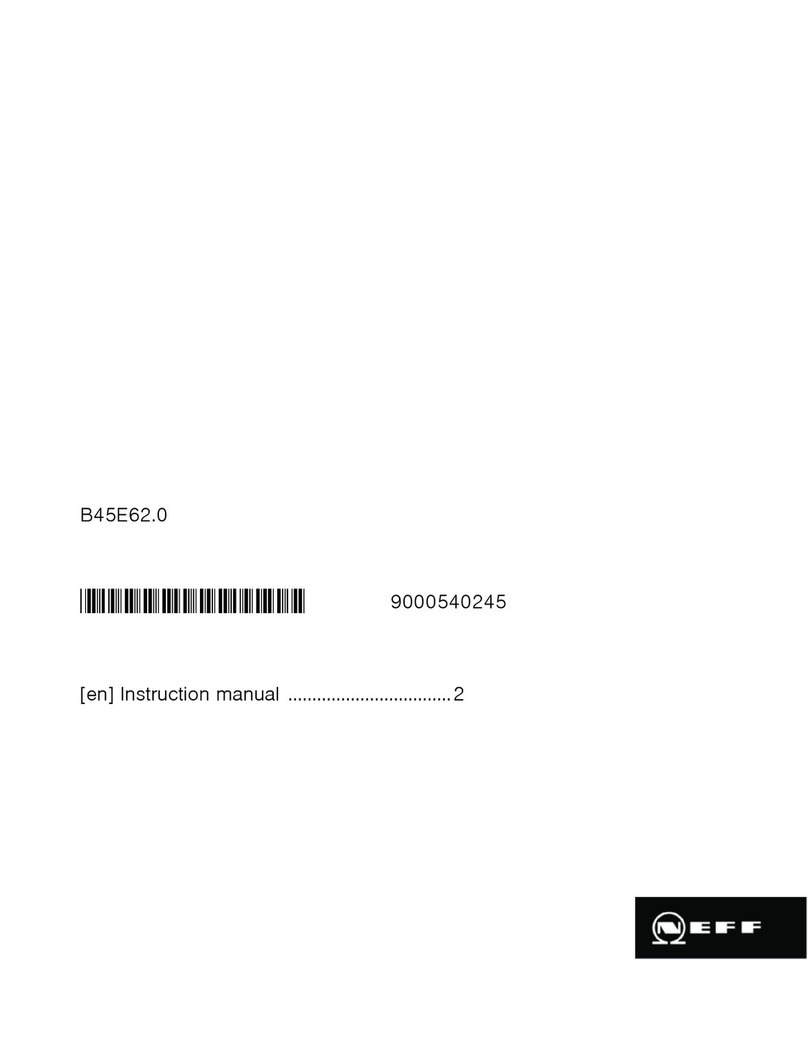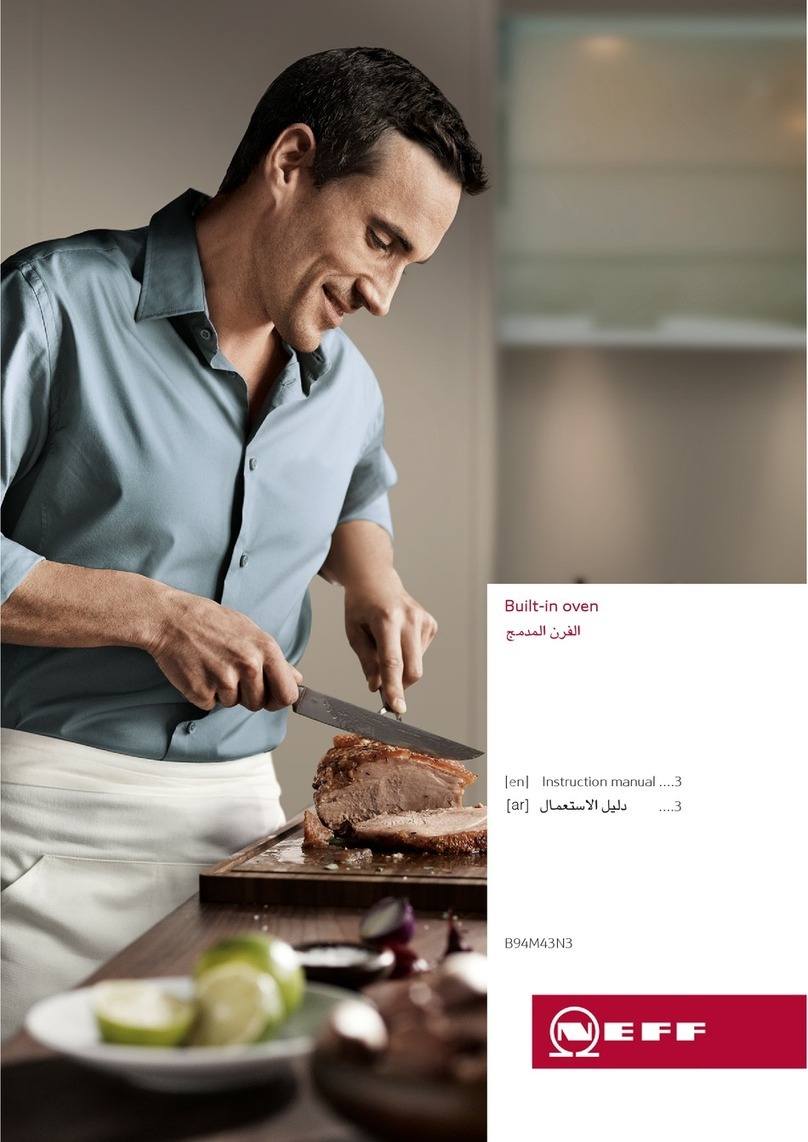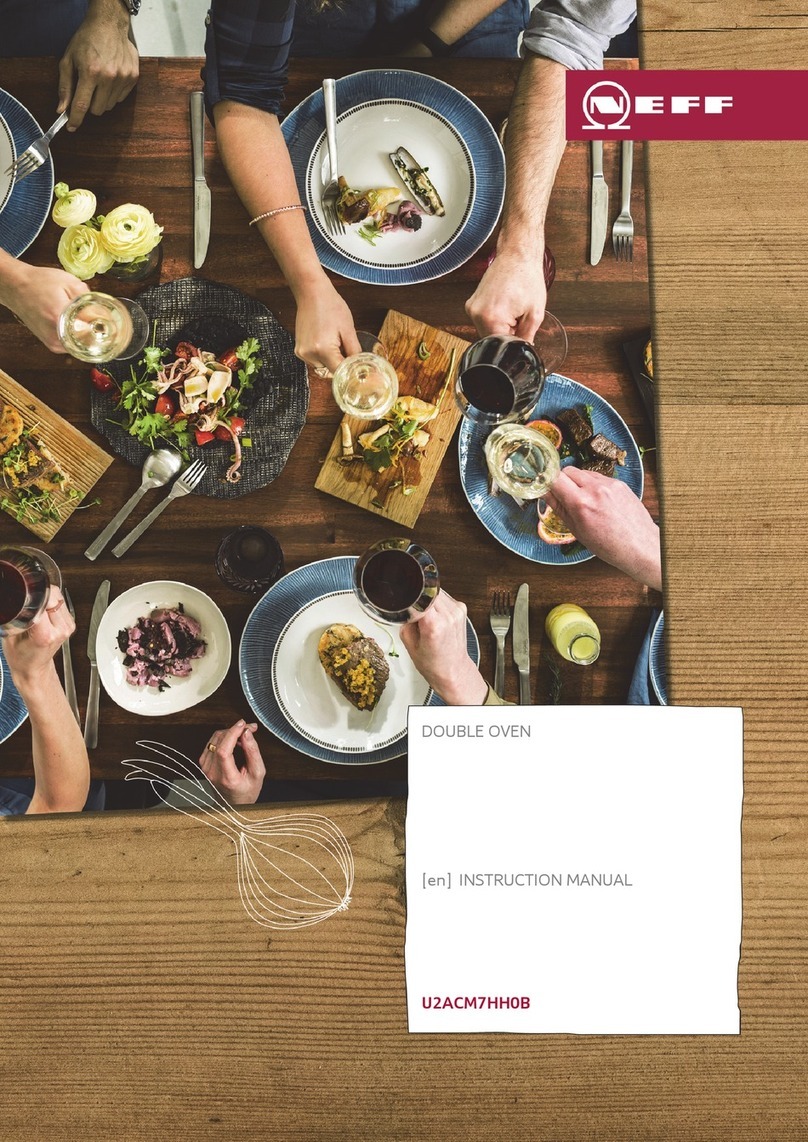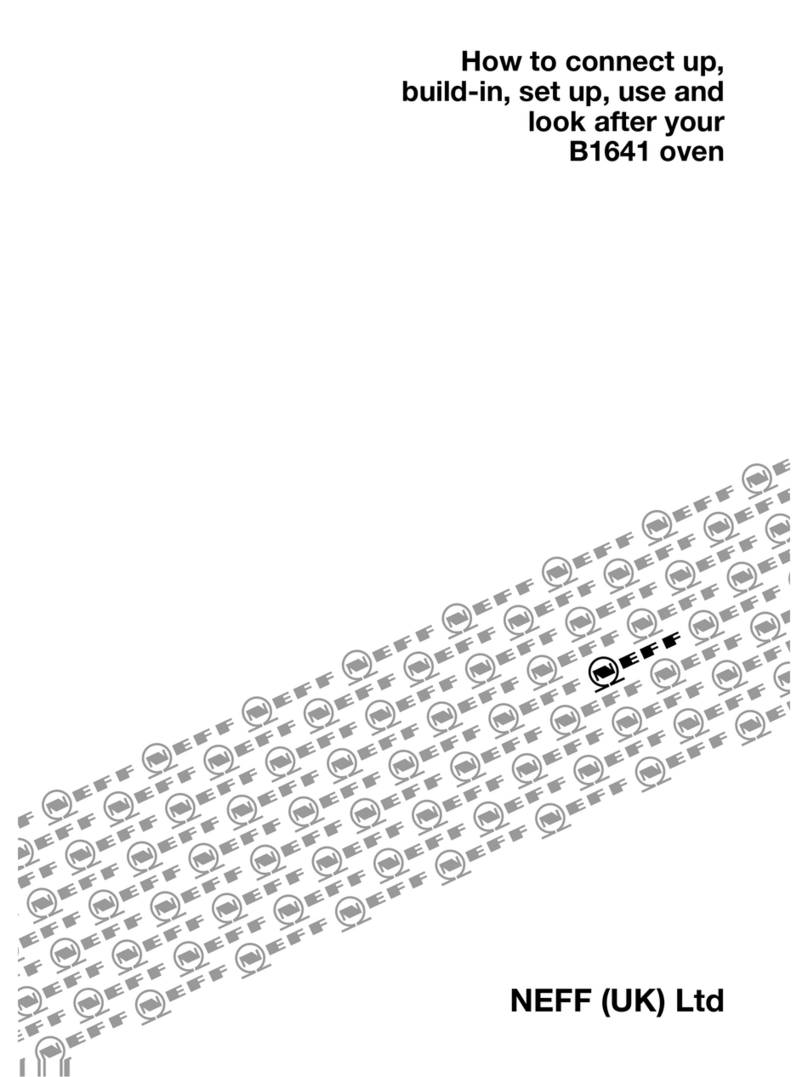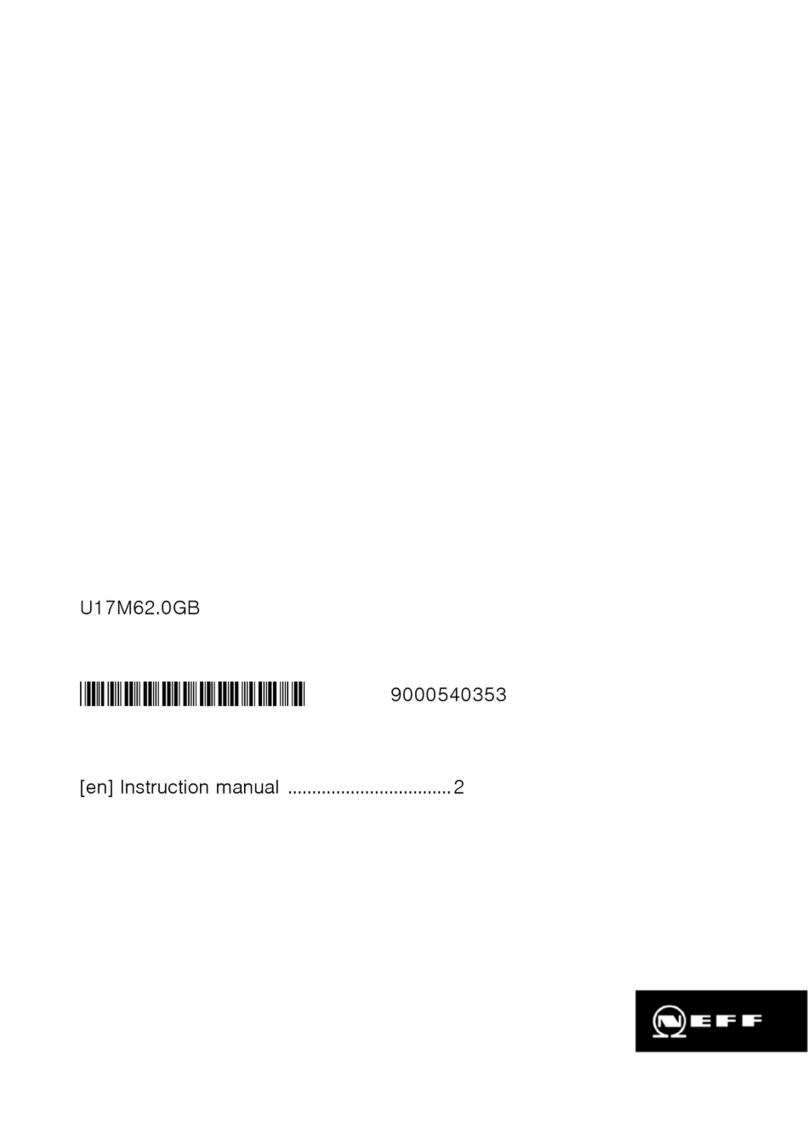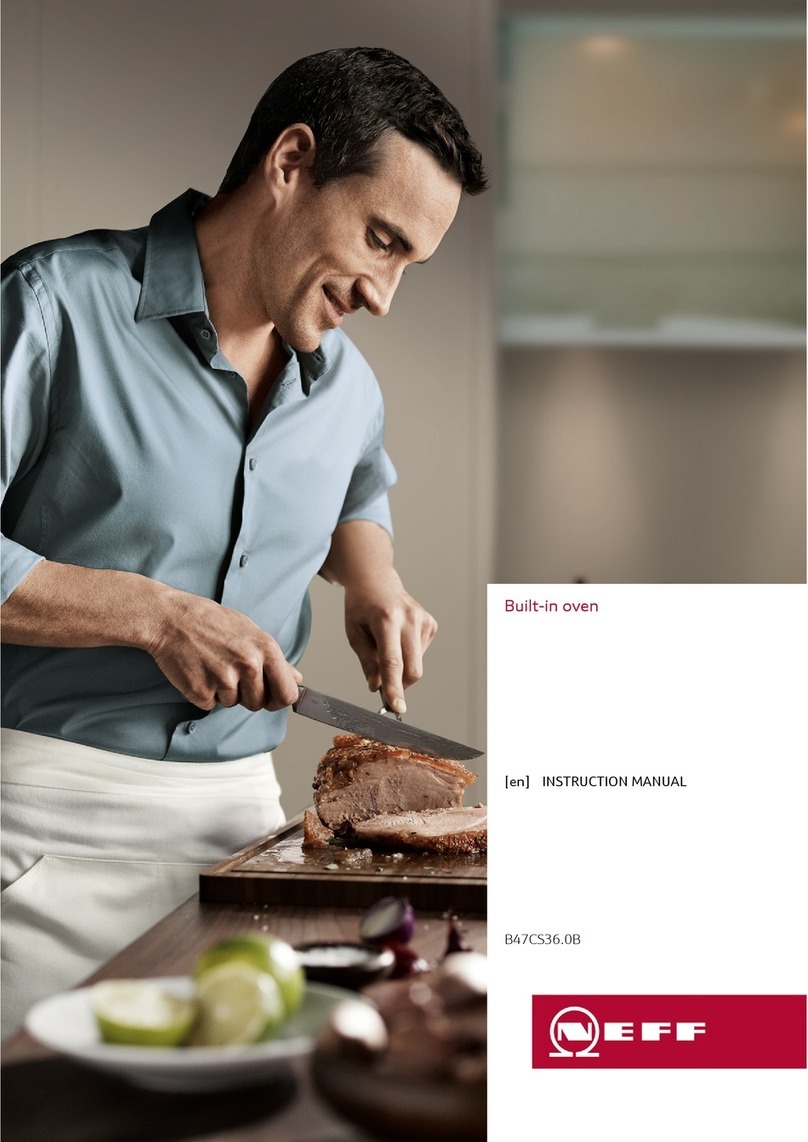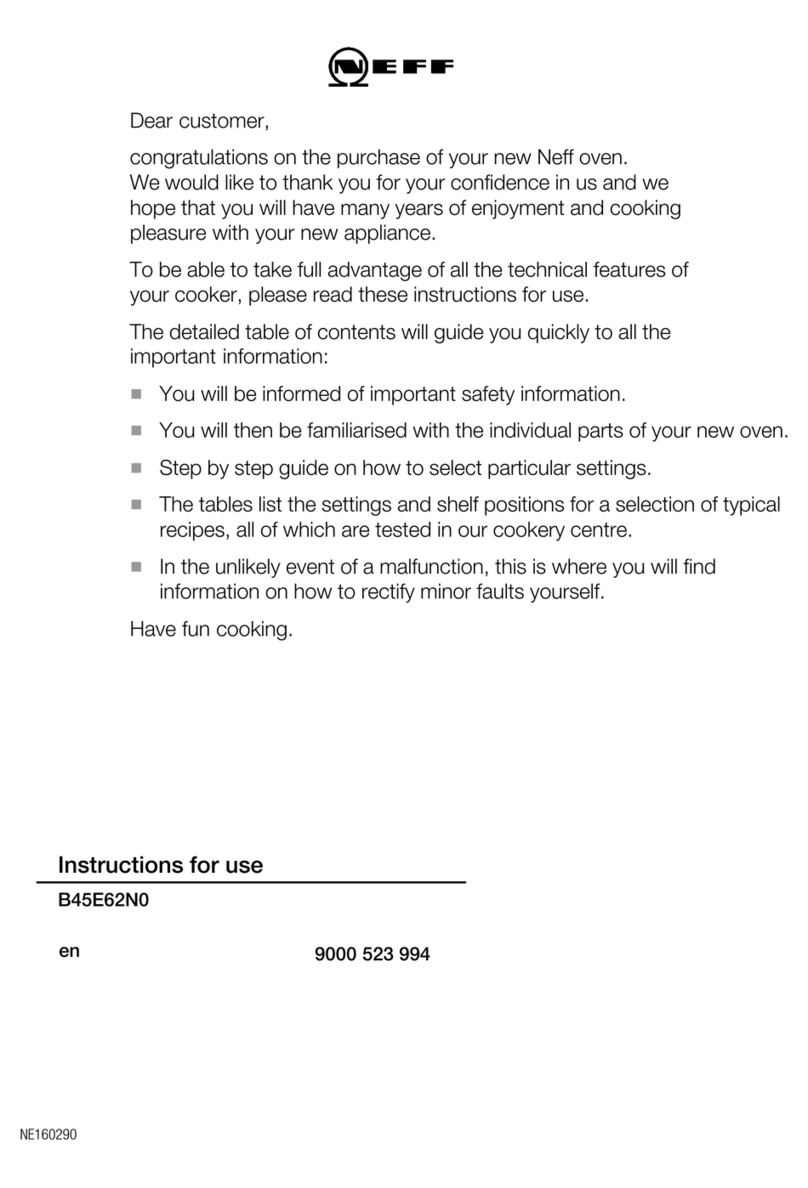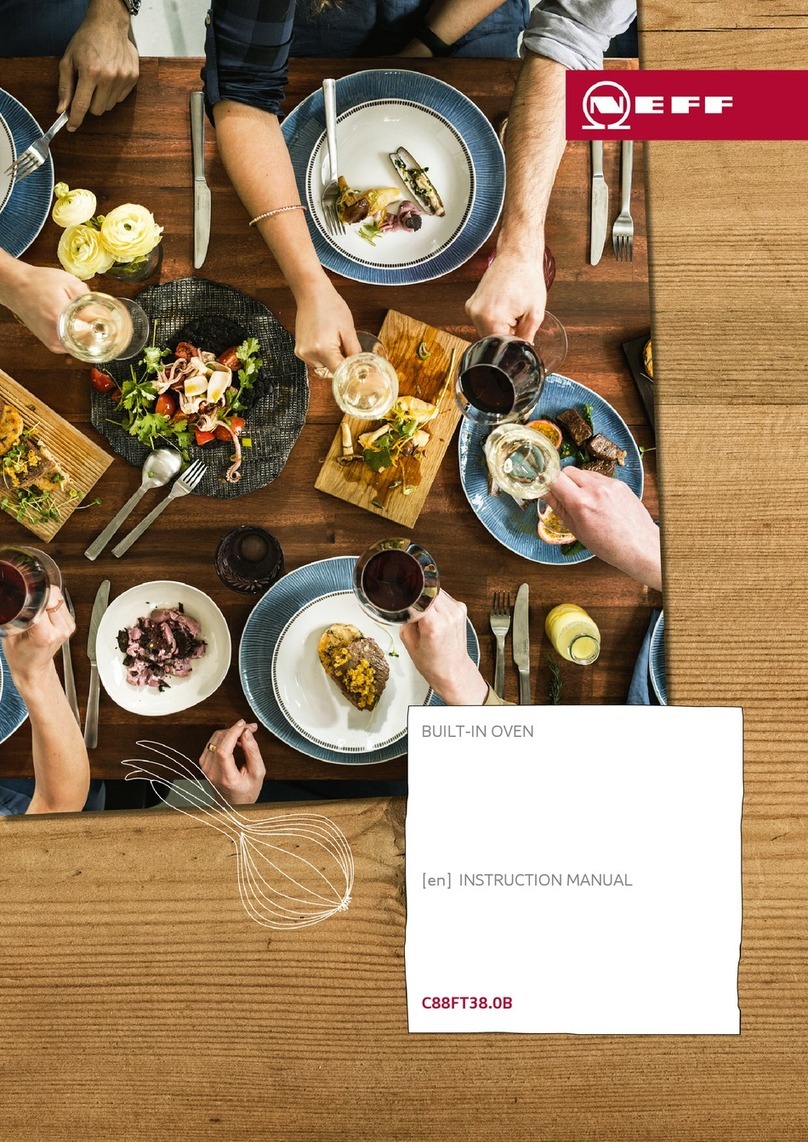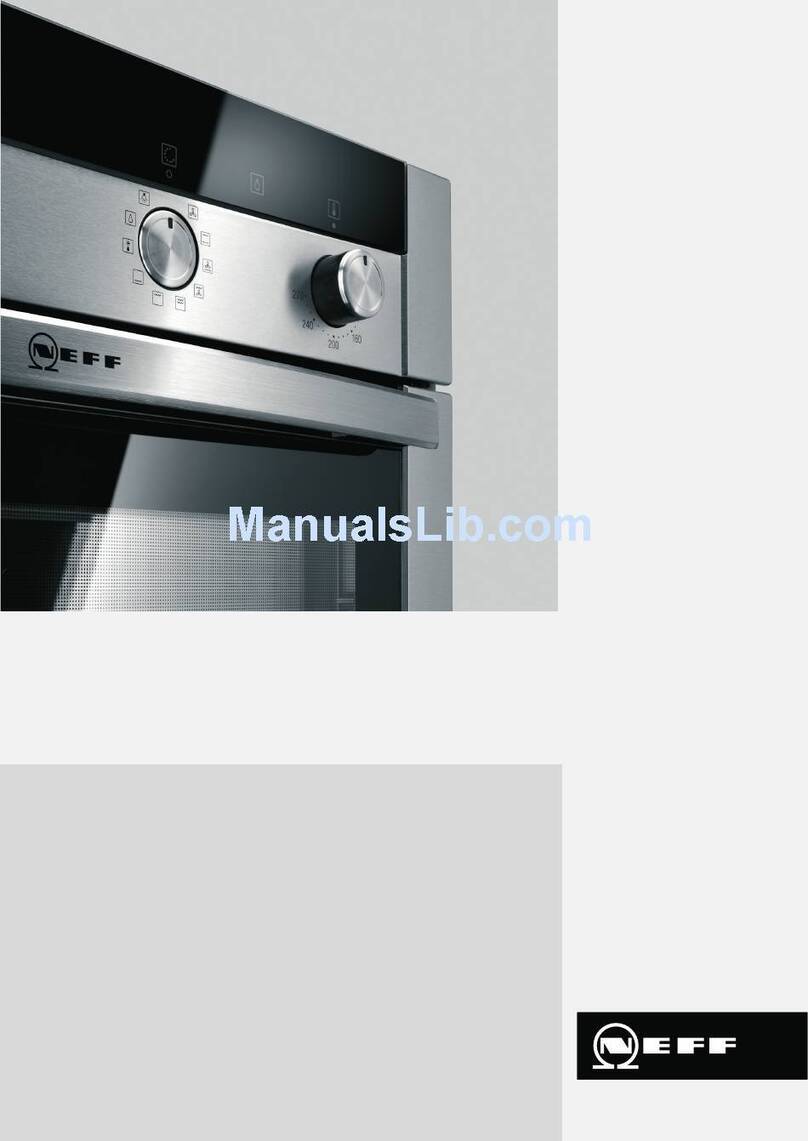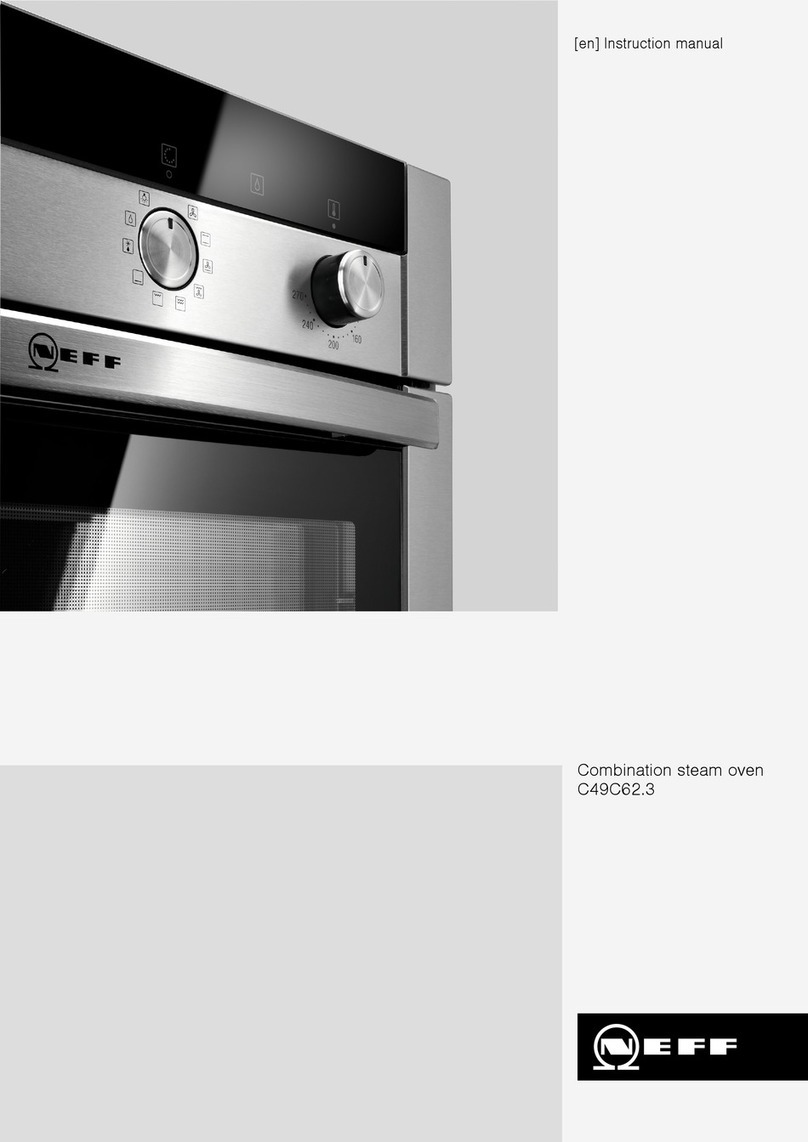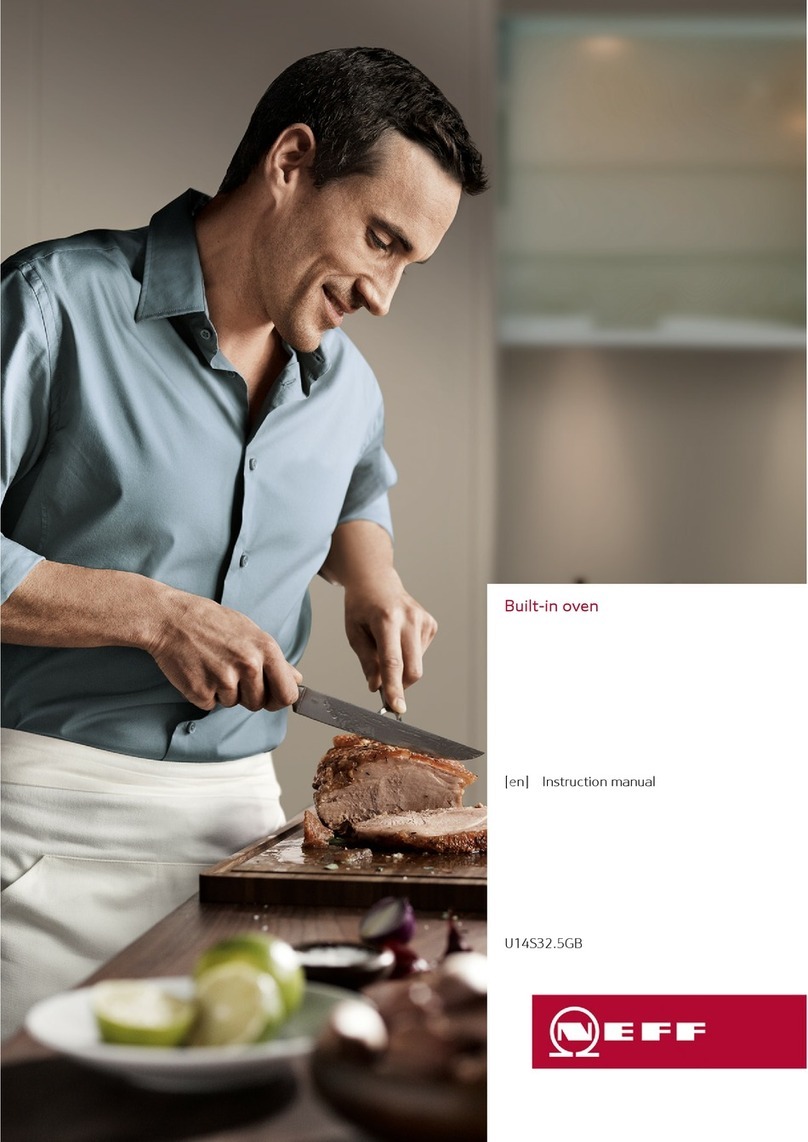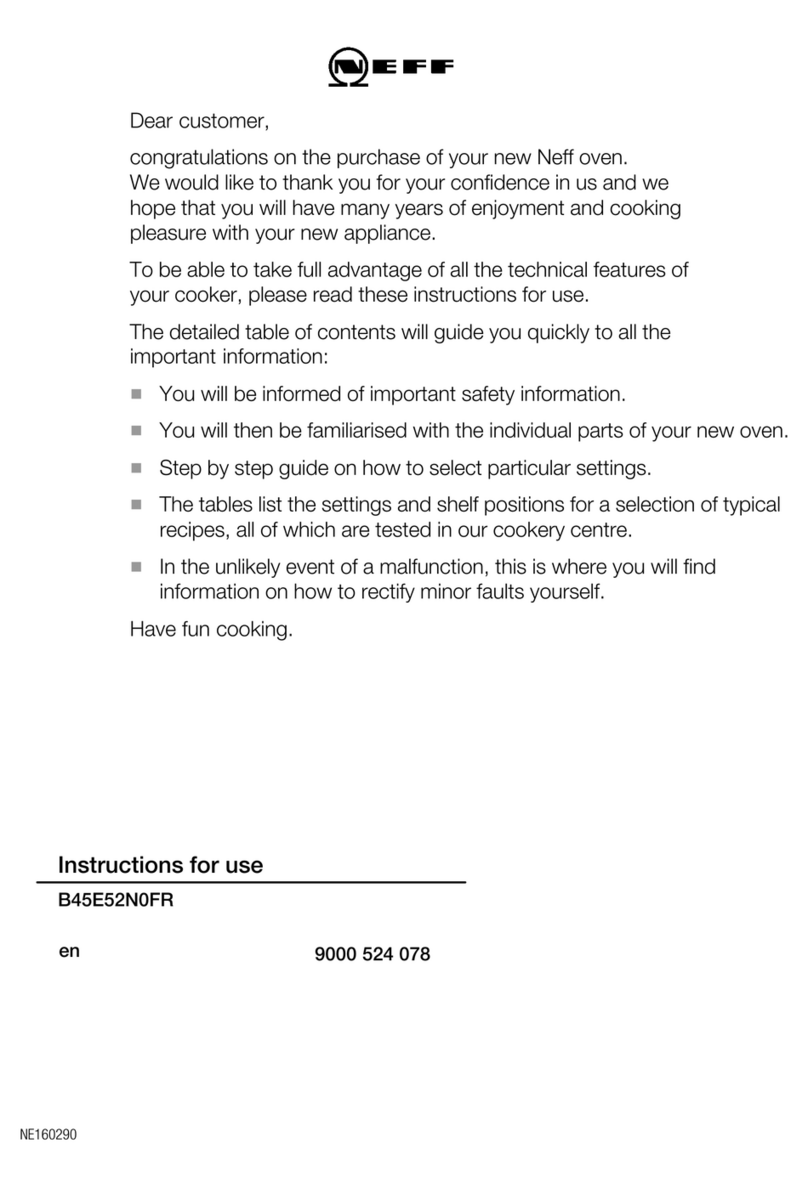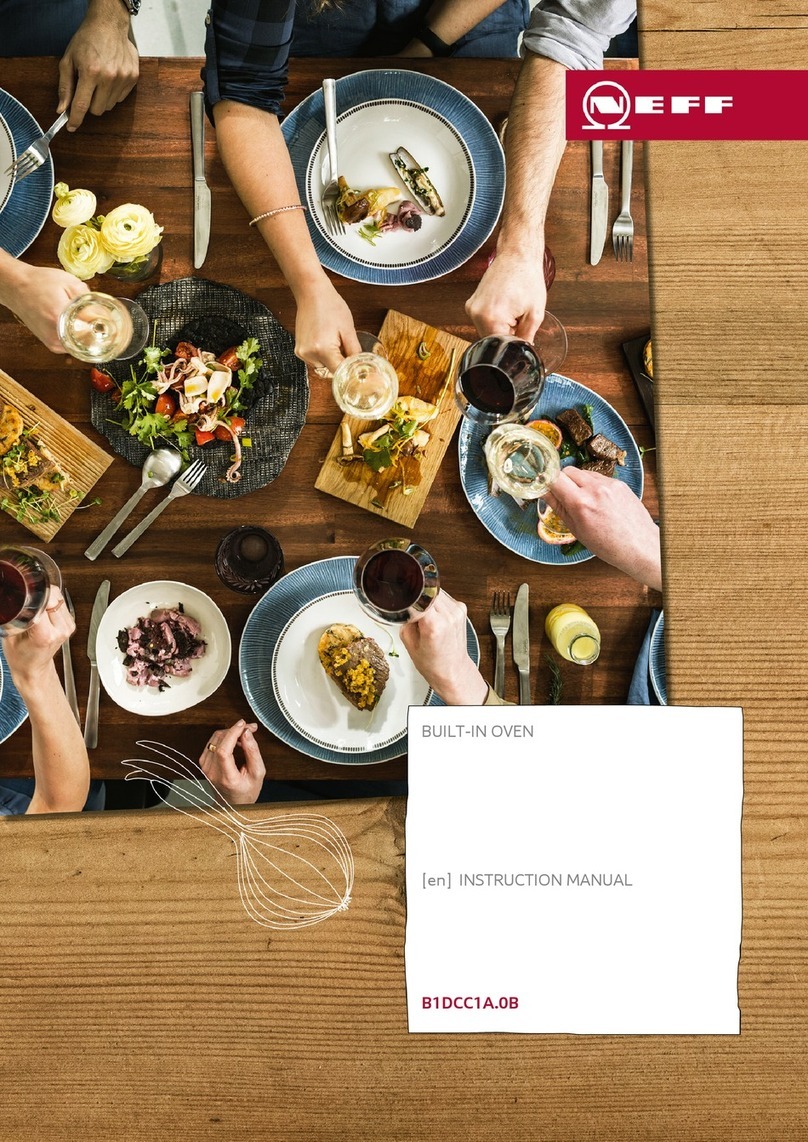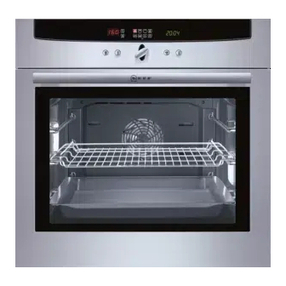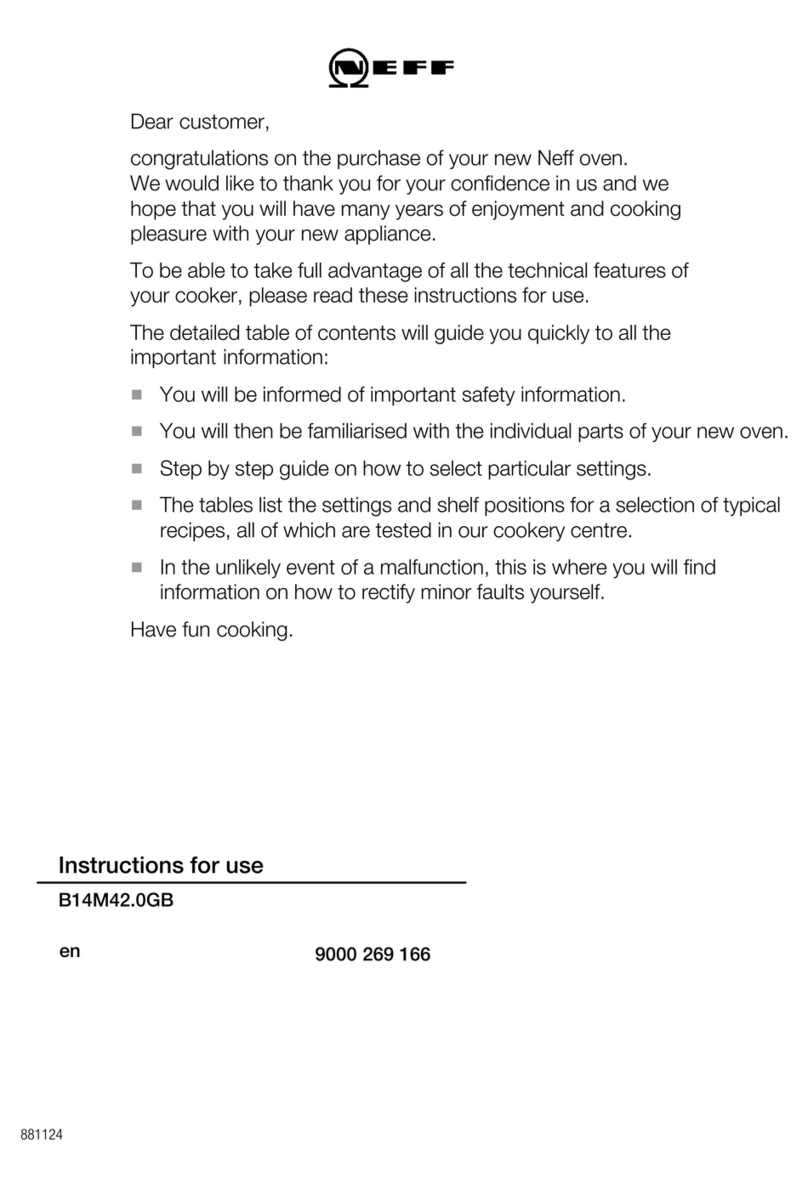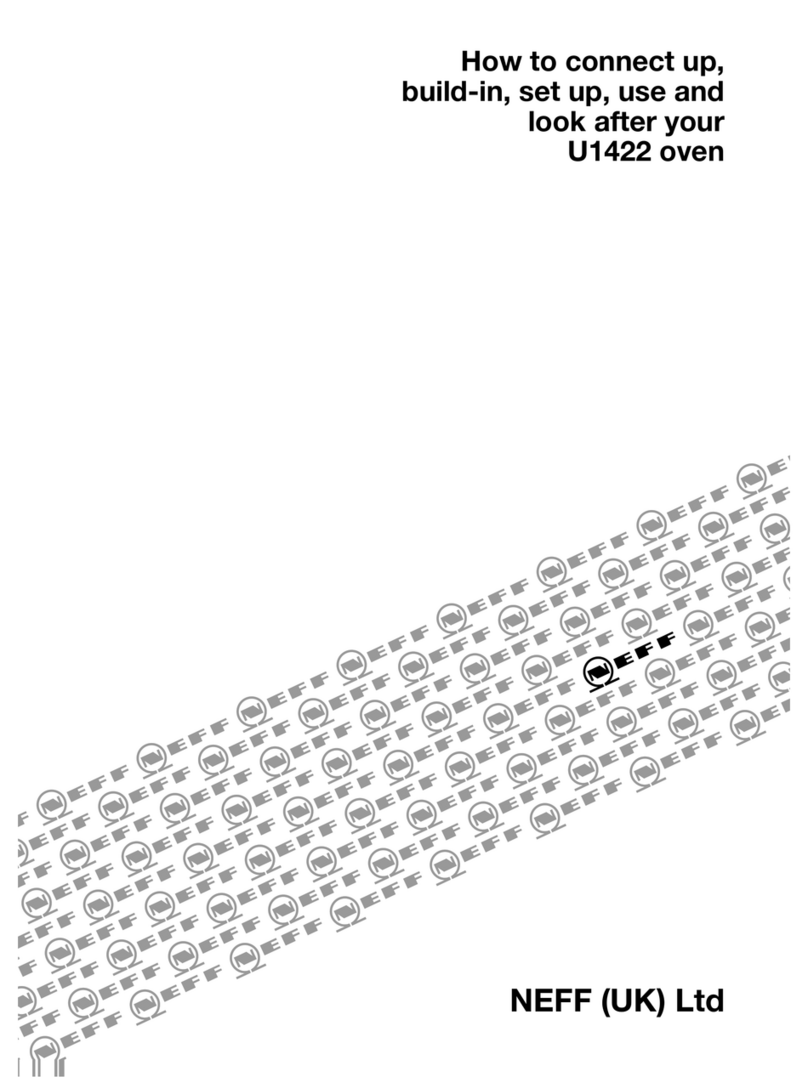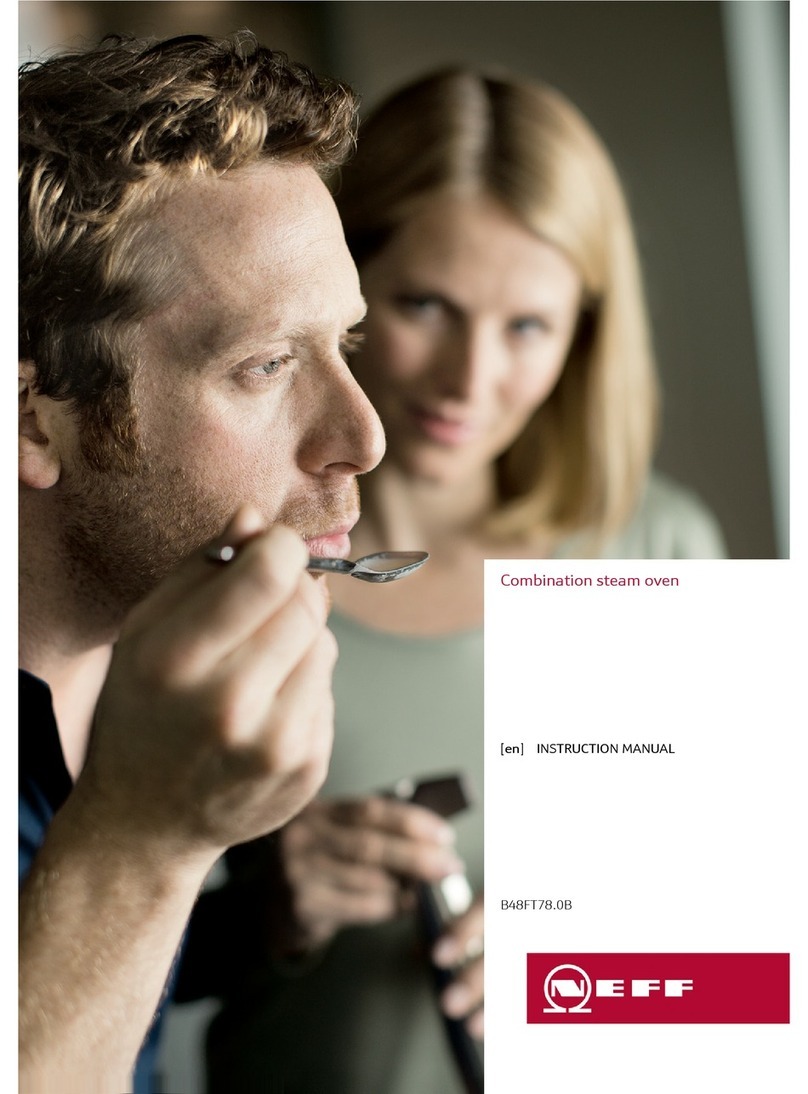3
ÚTable of contents
[en]Instructionmanual
Important safety information.....................................................4
Causes of damage .............................................................................5
Your new appliance....................................................................6
Control panel .......................................................................................6
Operating modes ................................................................................7
Automatic calibration .........................................................................7
Your accessories........................................................................7
Accessories .........................................................................................7
Inserting accessories .........................................................................7
Cooking compartment .......................................................................8
Optional accessories .........................................................................8
Before using for the first time ................................................... 8
Setting the clock .................................................................................8
Setting the water hardness range ...................................................8
First use ................................................................................................9
Cleaning the accessories before use .............................................9
Operating the appliance ............................................................ 9
Filling the water tank ..........................................................................9
Switching on the appliance...............................................................9
Switching off the appliance............................................................ 10
After each use .................................................................................. 10
Electronic clock........................................................................ 11
Clock display .................................................................................... 11
Timer .................................................................................................. 11
Cooking time .................................................................................... 11
Preset operation............................................................................... 11
Setting the clock .............................................................................. 12
Checking, correcting or deleting settings ................................... 12
Automatic programmes ...........................................................12
Setting a programme ...................................................................... 12
Notes about the programmes ....................................................... 13
Programme tables ........................................................................... 13
Childproof lock ......................................................................... 14
Lock.................................................................................................... 14
Permanent lock ................................................................................ 14
Basic settings ...........................................................................15
Automatic safety cut-out ......................................................... 15
Care and cleaning .................................................................... 15
cleaning agents................................................................................ 16
Descaling........................................................................................... 16
Removing and fitting the appliance door.................................... 17
Cleaning the door panels............................................................... 17
Cleaning the rails ............................................................................. 18
Troubleshooting .......................................................................19
Replacing the cooking compartment bulb ................................. 20
Changing the door seal.................................................................. 20
After-sales service ................................................................... 21
E number and FD number ............................................................. 21
Environmental protection ........................................................ 21
Environmentally-friendly disposal.................................................. 21
Tips for saving energy .................................................................... 21
Tables and tips ......................................................................... 22
Accessories ..................................................................................... 22
Cookware .......................................................................................... 22
Cooking time and quantity............................................................. 22
Distributing food evenly.................................................................. 22
Pressure-sensitive food .................................................................. 22
Cooking a menu .............................................................................. 22
Vegetables ........................................................................................ 22
Side dishes and pulses .................................................................. 23
Poultry and meat.............................................................................. 23
Fish..................................................................................................... 24
Soup vegetables, Miscellaneous.................................................. 24
Dessert, compote ............................................................................ 24
Reheating food................................................................................. 25
Defrosting.......................................................................................... 25
Proving dough.................................................................................. 25
Juicing................................................................................................ 25
Preserve............................................................................................. 26
Frozen products............................................................................... 26
Test dishes................................................................................ 27
Steaming ........................................................................................... 27
Produktinfo
Additional information on products, accessories, replacement
parts and services can be found at www.neff-
international.com and in the online shop www.neff-
eshop.com

